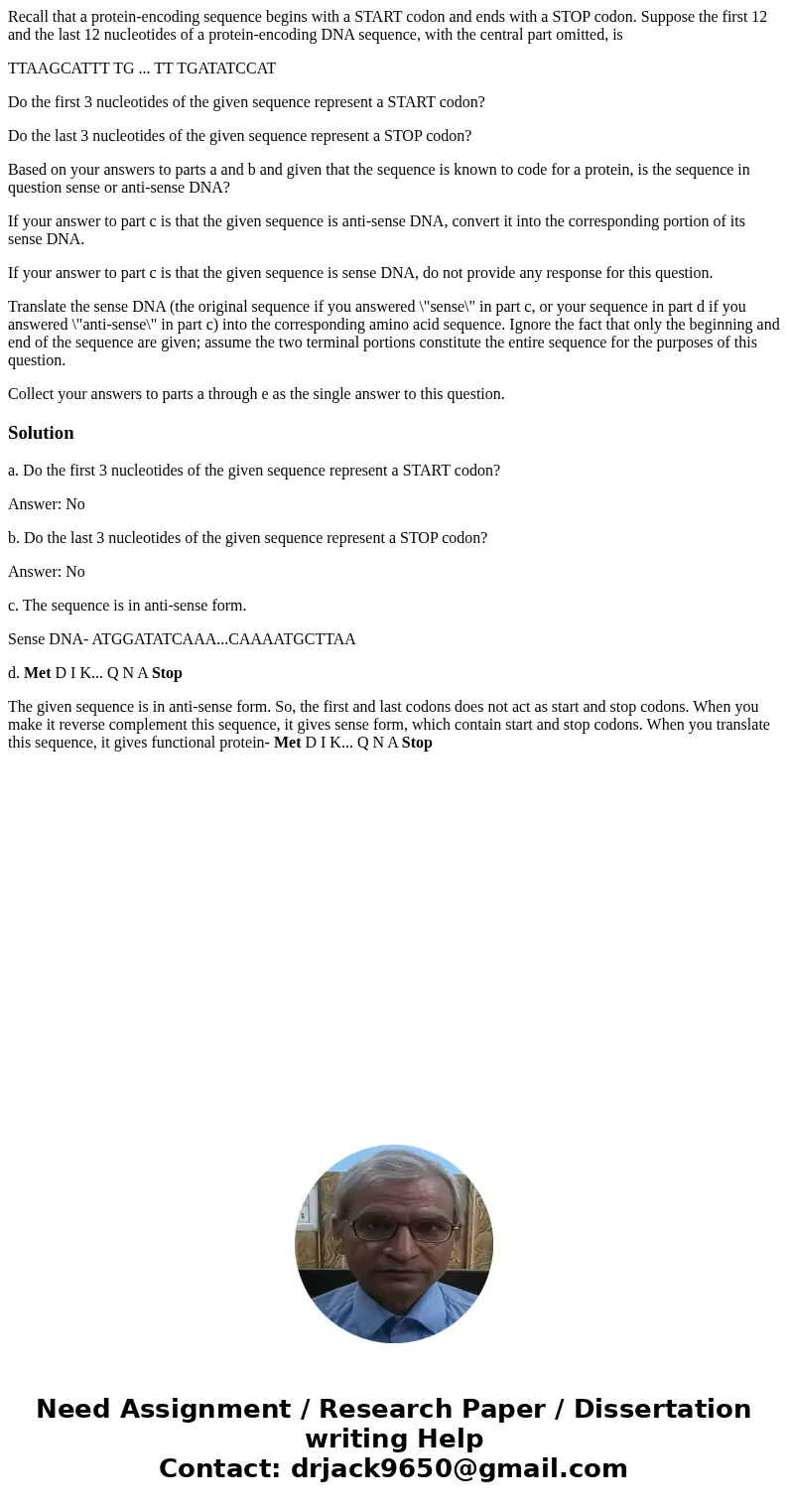Recall that a proteinencoding sequence begins with a START c
Recall that a protein-encoding sequence begins with a START codon and ends with a STOP codon. Suppose the first 12 and the last 12 nucleotides of a protein-encoding DNA sequence, with the central part omitted, is
TTAAGCATTT TG ... TT TGATATCCAT
Do the first 3 nucleotides of the given sequence represent a START codon?
Do the last 3 nucleotides of the given sequence represent a STOP codon?
Based on your answers to parts a and b and given that the sequence is known to code for a protein, is the sequence in question sense or anti-sense DNA?
If your answer to part c is that the given sequence is anti-sense DNA, convert it into the corresponding portion of its sense DNA.
If your answer to part c is that the given sequence is sense DNA, do not provide any response for this question.
Translate the sense DNA (the original sequence if you answered \"sense\" in part c, or your sequence in part d if you answered \"anti-sense\" in part c) into the corresponding amino acid sequence. Ignore the fact that only the beginning and end of the sequence are given; assume the two terminal portions constitute the entire sequence for the purposes of this question.
Collect your answers to parts a through e as the single answer to this question.
Solution
a. Do the first 3 nucleotides of the given sequence represent a START codon?
Answer: No
b. Do the last 3 nucleotides of the given sequence represent a STOP codon?
Answer: No
c. The sequence is in anti-sense form.
Sense DNA- ATGGATATCAAA...CAAAATGCTTAA
d. Met D I K... Q N A Stop
The given sequence is in anti-sense form. So, the first and last codons does not act as start and stop codons. When you make it reverse complement this sequence, it gives sense form, which contain start and stop codons. When you translate this sequence, it gives functional protein- Met D I K... Q N A Stop

 Homework Sourse
Homework Sourse